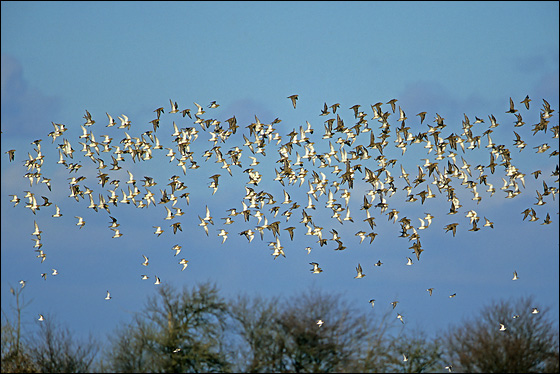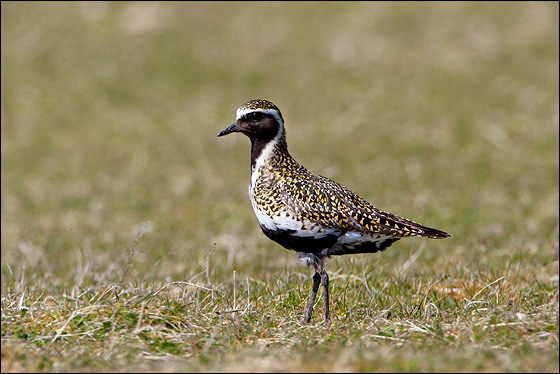Golden Plover (Pluvialis apricaria)
You won’t normally find Golden Plovers on winter estuaries – or at least, not in the middle of the intertidal zone where Grey Plovers hold sway. Golden Plovers are very much grassland birds that like to feed on stubbles or close-cropped pasture, sharing these habitats with Lapwings. Both birds feed on beetle larvae and insects, and not infrequently they search for them at night under a full moon. Plovers have high numbers of rod cells in the retina, ideal for working under conditions of poor light.
Golden Plovers breed on upland moors and bogs, and in the tundra. They revel in cool, misty and windy places where their crystal-clear calls and songs, pleading and tragic, seem entirely appropriate. The males often sing in flight, rising as high as 300m above ground and flying with an exaggerated upstroke to show off their glistening white underwings. Pairs usually form year on year and divorces are few.
Pairs are highly vigilant on their breeding territories and react promptly to the intrusions of predators. They either slip quietly off the nest or make a noisy commotion to distract the intruder. Dunlins, much admiring of the Golden Plover’s effective detection, often nest close by.


